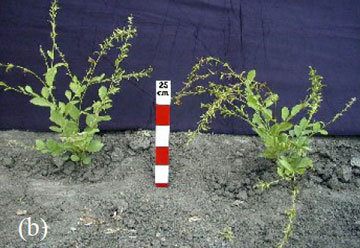|
|
Agriculture has long been dependent on the ability of plant species to adapt to varying environmental conditions — without this diversity agriculture development would not have been possible. But human activities are putting this diversity at risk through habitat destruction and introduction of alien species, especially in parts of the world where such diversity is particularly critical: tropical developing countries. This threat has spurred increased efforts to find and conserve plants with special traits adapted to the marginal farming systems of tropical smallholders.
In light of this, Bettina Heider, Elke Fischer, Tanja Berndl, and Rainer Schultze-Kraft report in the March 2009 issue of Tropical Conservation Science on their research on legumes in Southeast Asia, an area recognized as one of the most important centers of diversity for legume species. The authors used a molecular marker technology, random amplified polymorphic DNA marker (RAPD), to investigate the genetic relatedness among seed samples of four Desmodium and allied genera collected in Bac Kan province, Northeast Vietnam. They indicate that these legume plant species naturally occur in tropical and subtropical Asia, Australia, and Oceania, and possess a potential as forage or medicinal plants.
 Desmodium gangeticum. Photo by A. Ciprián (CIAT) |
Heider and colleagues say their study provides baseline data for future seed collecting and gene bank conservation strategies.
“Since conservation in gene banks is a cost-intensive endeavor, studies are required to describe the given diversity and ensure that the maximum of the genetic diversity of certain areas or plant species is stored in gene bank collections,” they write.
Bettina Heider, Elke Fischer, Tanja Berndl, and Rainer Schultze-Kraft 2009. Genetic relationships among accessions of four species of Desmodium and allied genera (Dendrolobium triangulare, Desmodium gangeticum, Desmodium heterocarpon, and Tadehagi triquetrum). Tropical Conservation Science Vol. 2 (1):52-69.